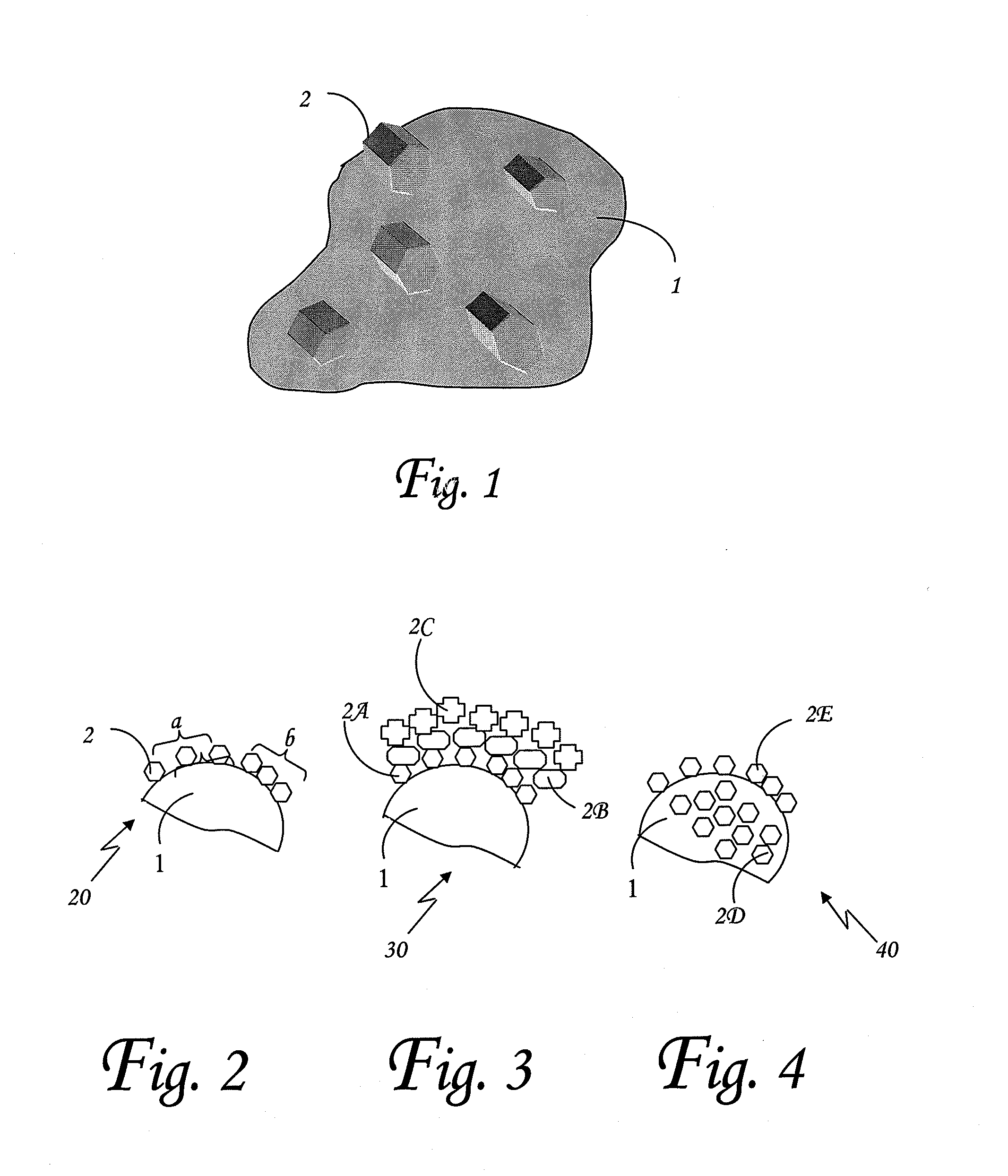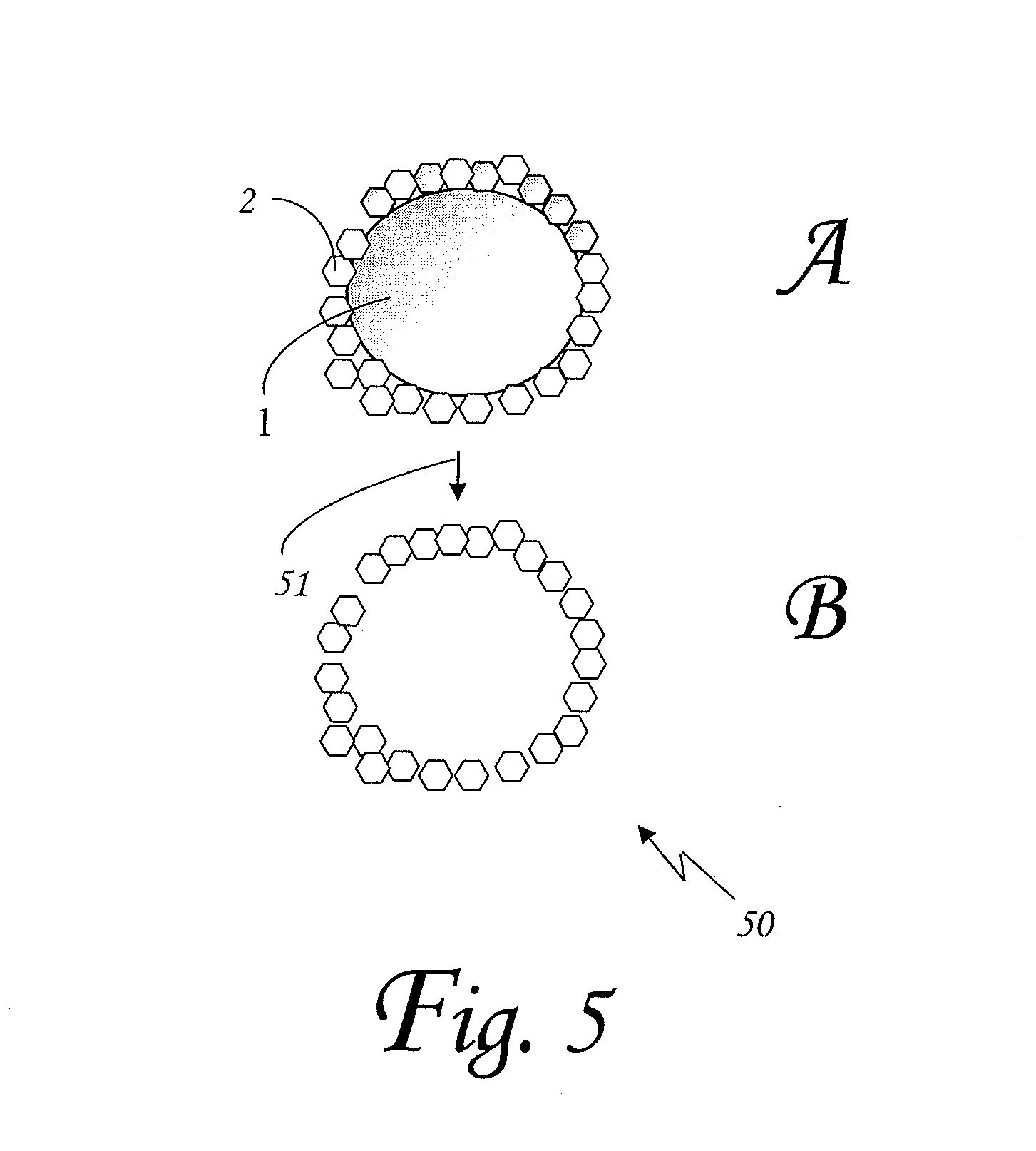Reactive fine particles
a technology of fine particles and catalysts, applied in the field of reactive fine particles, can solve the problems that catalysts usually have negative effects on the pot life of mixed formulas, and achieve the effect of cost-effectiveness
- Summary
- Abstract
- Description
- Claims
- Application Information
AI Technical Summary
Benefits of technology
Problems solved by technology
Method used
Image
Examples
example 1
[0042] To prepare reactive fine particles useful as latent curing agents, the following formulation was prepared. The following ingredient where effectively admixed: 6 parts EPN (EEW=174); 24 parts DGEBF (EEW=170); 5 parts acrylated oligomers having functionality of 1 and viscosity of 5 Cp; 3 parts acrylated oligomer having functionality of 2; 3 parts of acrylated oligomer with functionality of 3; one part acrylated epoxy; 4 parts free radical photinitiator; 9 parts BaSO4 inert filler having particle size of 40 nm and surface area of 30 m2 / g; 5 parts of dispersant; 0.2 parts organic peroxide; 25 parts glycol ether solvents mixture; 2.5 parts micronized DICY having average article size of 6 microns; 8 parts of melamine formaldehyde (MF) resin; 0.5 parts of wetting agents. The formulation was milled in pearl mill to disperse the solids. Ink jet ink was prepared from the same.
example 2
[0043] To enable continuous filtration of the ink obtained above, as required in industrial ink jet machines and enable introducing into the print head, a process of deposition of DICY on particles smaller than 2 μm was developed. DICY was slowly precipitated onto BaSO4 fine particles from saturated organic or aqueous solution, and stabilized by reology additives and dispersant. The obtained slurry was milled with epoxy resins, dispersants and solvents to form an ink precursor. The resins and dispersant keep the rheology in a state that blocks re-agglomeration and DICY crystals growth. Milling was performed in a Dyno Mill, (Bead size 0.4 mm, 2000 RPM, Retention time of about 12 minutes), until this low viscosity concentrate could be easily filtered through 2 μm glass fiber filter.
PUM
| Property | Measurement | Unit |
|---|---|---|
| particle size | aaaaa | aaaaa |
| temperatures | aaaaa | aaaaa |
| temperatures | aaaaa | aaaaa |
Abstract
Description
Claims
Application Information
 Login to View More
Login to View More - R&D
- Intellectual Property
- Life Sciences
- Materials
- Tech Scout
- Unparalleled Data Quality
- Higher Quality Content
- 60% Fewer Hallucinations
Browse by: Latest US Patents, China's latest patents, Technical Efficacy Thesaurus, Application Domain, Technology Topic, Popular Technical Reports.
© 2025 PatSnap. All rights reserved.Legal|Privacy policy|Modern Slavery Act Transparency Statement|Sitemap|About US| Contact US: help@patsnap.com



